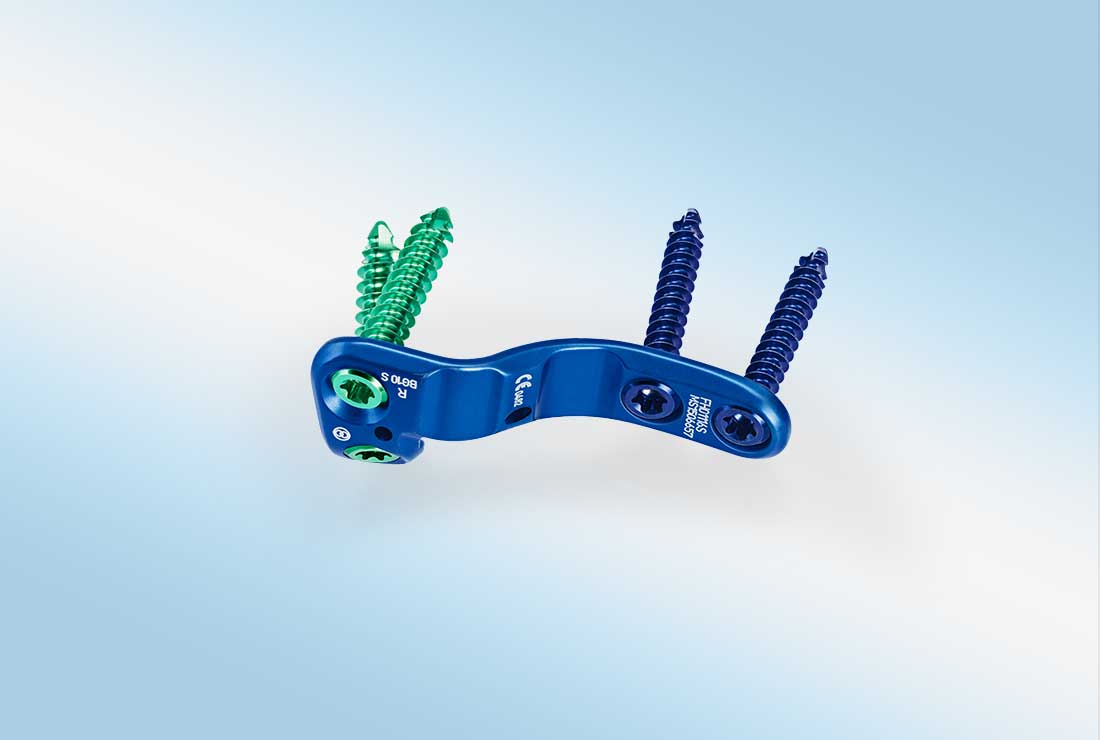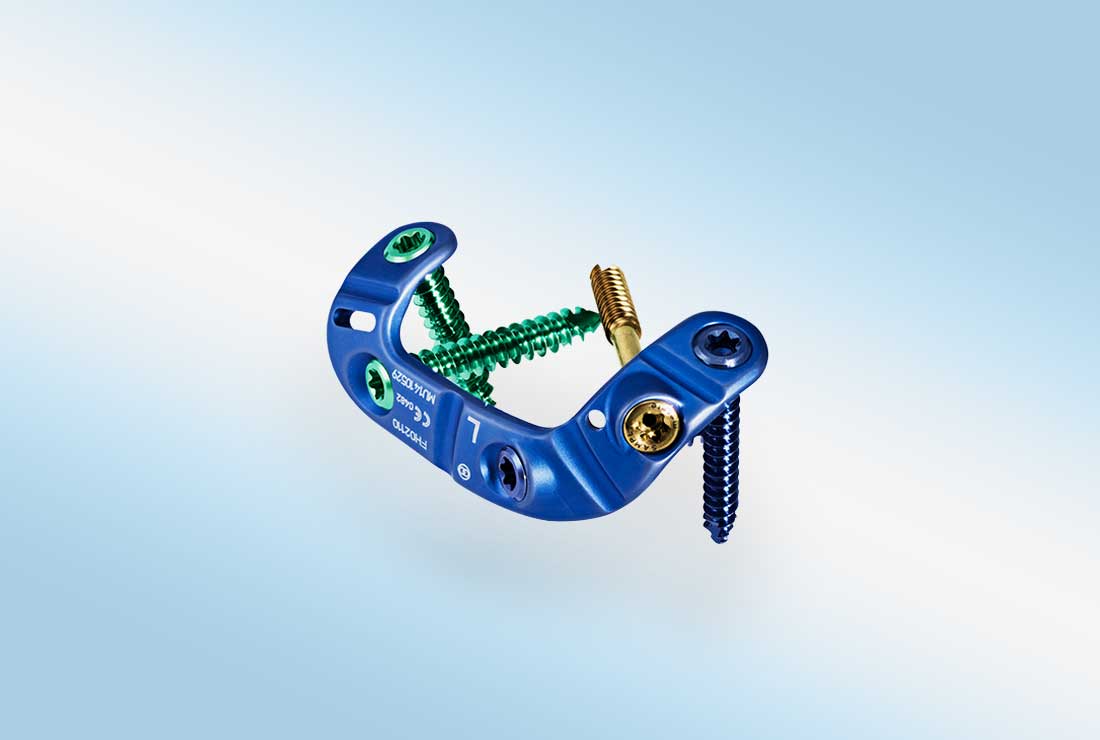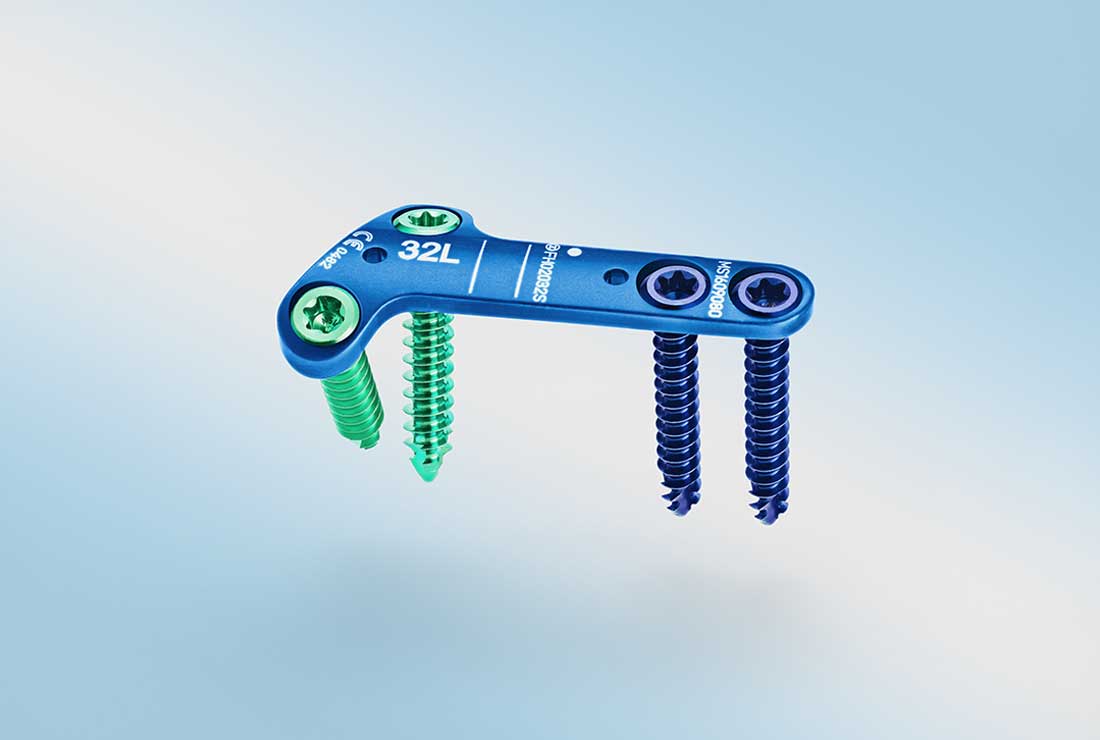Disclaimer and contact information
About surgical techniques:
Proper surgical procedures and techniques are the responsibility of the medical professional. The guidelines contained herein are furnished for information purposes only. Each surgeon must evaluate the appropriateness of the procedures based on his or her personal medical training and experience. Prior to use of any Merete systems, the surgeon should refer to the product package insert for complete warnings, precautions, indications, contraindications and adverse effects. Package inserts are also available by contacting Merete Technologies, Inc.
About E-IFUs:
If you have any further questions about the sterilization processes after reading our instructions, contact us at 630-869-1091 or service@merete-medical.com.
OP-Video Surgical Technique E-IFU
MetaFix™ Plantar BG10
Plantar arthrodesis after lapidus
Our innovative MetaFix™ Plantar BG10 locking plate constructs for plantar Lapidus procedures are easy-to-use for stable and safe stabilization of tarsometatarsal joint (TMT1) arthrodeses of the first ray. The proximal medial extension of the plate allows an optimal and clear first intra-operative fixation. Additionally, a biomechanically optimal placement on the tension side of the joint allows early weight-bearing and rapid mobilization of the patient through compressing osteotomy surfaces under load. The innovative MetaFix™ Plantar BG10 was developed in collaboration with Dr. med. Bernd Gaudin, Hygiea Berlin Clinic.
Technical Specifications
- Low Profile, anatomically formed locking plates for left and right feet in lengths of 37 and 40 mm
- Plates and Screws made of titanium alloy (Ti6AI4V ELI, ISO 5832-3, ASTM F136)
- Used with 3.0 mm and 3.5 mm MetaFix™ LS locking screws and a dorsal cannulated, partially threaded, headed compression screws
- Crossing proximal locking screws for enhanced fixation
- K-wire holes in the plate allow temporary fixation for locking screw insertion
FEATURES
- Plantar Lapidus procedure to fuse bone fragments on the tension side of the TMT1 joint
- Large correction potential for mild and severe Hallux Valgus interventions close to apex of the deformity
- Allows the de-rotation of the first ray and addresses Hallux Valgus in the coronal plate (triplanar correction) to planarize the sesamoids
- Reduced relapse rates
- Proximal medial plate extension for optimal fixation
- Biomechanically optimal placement of the plate on the tension side of the joint allows early weight-bearing and rapid mobilization
- Plantar locking plate position is covered with thick muscle belly of the abductor hallucis
- Offering a cosmetically advantageous plantar scar
- Correction of medium and large intermetatarsal angles, even in case of unsuccessful corrections in the shaft area
- High primary stability without correction loss due to angular stability
- Bending zones allow adaptability to the situation without damaging the threaded holes
- K-wire holes on the plate allow temporary fixation
Indications
Fixation of fresh fractures, revision procedures, joint fusion, and reconstruction of small bones of the hand, feet, wrist, ankles, fingers, and toes.







